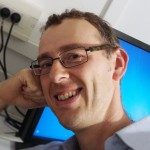Link to Pubmed [PMID] – 24289478
Cilia 2013;2(1):16
Cilia and flagella perform diverse roles in motility and sensory perception, and defects in their construction or their function are responsible for human genetic diseases termed ciliopathies. Cilia and flagella construction relies on intraflagellar transport (IFT), the bi-directional movement of ‘trains’ composed of protein complexes found between axoneme microtubules and the flagellum membrane. Although extensive information about IFT components and their mode of action were discovered in the green algae Chlamydomonas reinhardtii, other model organisms have revealed further insights about IFT. This is the case of Trypanosoma brucei, a flagellated protist responsible for sleeping sickness that is turning out to be an emerging model for studying IFT. In this article, we review different aspects of IFT, based on studies of Chlamydomonas and Trypanosoma. Data available from both models are examined to ask challenging questions about IFT such as the initiation of flagellum construction, the setting-up of IFT and the mode of formation of IFT trains, and their remodeling at the tip as well as their recycling at the base. Another outstanding question is the individual role played by the multiple IFT proteins. The use of different models, bringing their specific biological and experimental advantages, will be invaluable in order to obtain a global understanding of IFT.

